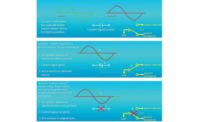In the October 2017 issue, three dehumidification methods for health care were introduced (“Dehumidification For Health Care”): low temperature DX, low temperature glycol, and desiccant dehumidification.
Article Index:
- Automatic Setpoint Adjustment
- Control Network Architecture
- Sequences of Operation
- Cooling Coil Sizing
- Room Cooling/Heating
- Fiscal Outcomes
While these methods are helpful, it is important to note that flexibility is key. Every situation is different, and various factors need to be considered when designing HVAC systems. This holds true for hospital operations as well. Efficiency of hospital operations is determined by factors like the utilization rate of each room, such as operating rooms (OR). In this article, the effect of OR turnover time at hospitals will be covered as it relates to HVAC systems.
Turnover time is no new concept for hospitals. For the purpose of this article, turnover time means from the moment one patient leaves the OR to the next patient entering. Hospitals have been actively attempting to reduce turnover times by implementing strategic pre-op patient preparedness, surgical case order, tracking case efficiently, and streamlining procedure scheduling. Turnover time represents lost revenue generating opportunities for hospitals and surgeons alike. Surgeons are paid independently from hospitals based on the number of surgeries they can perform. This means the faster the turnover time the more surgeries a surgeon can perform in a single day.
However, often times there are limitations to what kind of operations can be done in ORs due to the inflexible HVAC design. For instance, certain rooms are dedicated to open heart surgery due to the stringent temperature and humidity needed for the operation. Without a proper design, it can take a whole day for the room conditions to adjust to the correct setting for the particular operation. In order to decrease turnover time while meeting the medical staff’s necessary temperature and humidity requirements, various combinations of the following strategies can be used.
Automatic Setpoint Adjustment
Recent advancements allow OR schedules to be incorporated into the BAS. This allows the room temperature and humidity setpoints to be automatically adjusted to accommodate the next surgery without the time delay required for a human to manually adjust them.
Control Network Architecture
HVAC control systems typically incorporate BACNET Master Slave Token Passing (MS/TP) protocol using RS-485 wiring to communicate between various controllers. Controls contractors will often place up to 60 controllers on a single RS-485 loop in low-bid scenarios unless specified otherwise, which can result in communication delays of approximately 30 seconds. This results in low cost, but also in low communication speeds. It is recommended to place no more than 30 controllers on a single loop to keep communication time below five seconds.
Sequences of Operation
Chilled water temperature and differential pressure reset controls can significantly delay turnover time, particularly in shoulder seasons. Consider assigning the BAS to monitor chilled water valve positions for OR AHUs and override the standard chilled water reset controls when the valves are more than 90% open. Additionally, maximum rate of change — and time delay constants throughout the controls sequences — should be evaluated to reduce overly conservative delays where possible.
Cooling Coil Sizing
A typical approach for sizing an AHU cooling coil is to use one set of setpoints (i.e., the lowest room dry bulb and corresponding relative humidity) together with the minimum required air changes per hour (ACH). However, this approach might result in an undersized cooling coil. In Part 1, we used the following room dry bulb (DB) temperature and relative humidity (rh) setpoints: 1) minimum 650ºF/40% rh, 2) maximum 750ºF/50% rh. We also assumed that the OR has an area of 515 sq ft and a ceiling height of 10 ft. The minimum required air ACH for an OR during occupied mode is 20, which translates to approximately 1,800 cfm of supply air into the room.
Figure 1 shows that the difference in cooling coil capacity between using the lowest room DB/rh setting versus the highest room DB/rh setting is approximately 20%. For illustrative purposes, the authors have assumed that the AHU is provided with a glycol coil; similar outcomes would occur in the case of desiccant systems or DX systems.

Figure 1. AHU cooling coil sizes.
In order to approximate the real operating conditions of the OR HVAC system, one should not assume that all ORs are operating the lowest setpoints at the same time and use that condition to size the system cooling coil(s). These authors recommend sizing the cooling coils of the OR AHUs such that the all ORs are cooled from the highest design set points to the lowest design set points. This scenario, although it can be considered somewhat conservative, could happen when the OR HVAC system transitions from the night setback/unoccupied mode into the occupied mode.
A similar approach should be followed when sizing the humidifiers and reheat coils. Figure 2 shows AHU humidifiers and OR terminal units that are provided with reheat coils and trim humidifiers. In this scenario, these authors recommend sizing the AHU humidifier such that the lowest OR DB/rh setpoints are met; the zone trim humidifiers will then be used for specific OR relative humidity control. These zone trim humidifiers could be located inside of a “custom” terminal unit or inside of the supply ductwork, downstream of the terminal unit.

Figure 2. OR AHU system configuration.
Furthermore, the terminal unit reheat coils will need to be sized following a process similar to sizing the AHU cooling coil. These reheat coils will need to warm up the OR from the lowest DB/rh setpoints to the highest DB set point within the desired OR turnover time.
Room Cooling/Heating
A transient computational fluid dynamics (CFD) model of a typical OR, using 20 air changes per hour (ACH) and a laminar airflow pattern, was created in order to evaluate the length of time required to transition from one set point to another (Figure 3).

Figure 3. Computational fluid dynamics model of a typical OR.
The results proved that cooling and dehumidifying from 75°F/50% rh to 65°F/40% rh proved to be the more difficult transition. Wall conduction, thermal mass of room surfaces, and the radiant time delay of radiant heat absorbed during the previous surgery result in larger loads than one might expect during a transition period. In addition, OR airflows are, by design, laminar. The combination of larger than expected loads, concentrated at room surfaces such as the floor and walls, and non-mixing laminar flow result in significant temperature asymmetry during transition periods, particularly close to wall surfaces.

Figure 4. Thermostat on a typical wall.
Figure 4 depicts room temperature at a 4-ft high plane, 10 minutes into a transition period. The room temperature near the surface of the walls has changed little, despite the fact that room temperature and humidity is at or below setpoint in the occupied areas that matter. Placing the room’s temperature sensor in the return air duct, or using a wireless sensor closer to the center of the room, can significantly reduce the perceptible turnover time as shown in Figure 5. The chart depicts the temperature measured by sensors in various locations, starting the moment 55ºF air is delivered to the space. In general, the results validated our experience in real installations; however, real installations will experience additional turbulence and air mixing due to occupant movement, ceiling-mounted booms, etc., which will result in less (but still significant) temperature and humidity asymmetry than seen in the model. An identical simulation using increased diffuser area and 30 ACH produced similar results with slightly less asymmetry.

Figure 5. Temperature vs time relative to sensor location.
Fiscal Outcomes
OR cost per minute has been a widely studied and debated issue among hospitals. It can vary greatly among hospitals due to scheduling, staff pay, and overall overhead costs. The industry standard for an OR room cost $20 per minute for a basic procedure. Twenty dollars per minute may not seem like a meaningful number at first, but this can represent significant savings for both small and large hospitals. Figure 6 shows how much money a hospital can save each year for every minute of reduction for turnover time. This savings is based on eight procedures a day for 250 operating days a year.

Figure 6. Revenue vs turnover time.
A study by Stanford University of Medicine, published by the National Institute of Health, was performed to predict surgery duration. Results showed that out of a total of 10,305 surgeries, the duration of approximately 50% of surgeries was under 50 minutes and 70% were under 100 minutes. With the durations of most surgeries being short and the quantity of surgeries a day increasing, turnover time becomes vital for a hospital to reduce. In fact, reducing turnover times may allow a hospital to regularly schedule additional operations in the OR suite without adding staff. By routinely adding an additional one-hour surgery for 250 operating days a year, a hospital can increase its margin by $500,000.
As shown, a properly designed HVAC system can increase the utilization rate of the operating rooms, allowing for a more efficient hospital operation. When designing, it is crucial to consider all necessary needs to tailor the design by project specific demands. In other words, there are no single temperature and relative humidity setpoints that satisfy all ORs within a suite. However, having the right control system and an appropriate coil size will allow for the flexibility needed to cool or heat the operating room.









